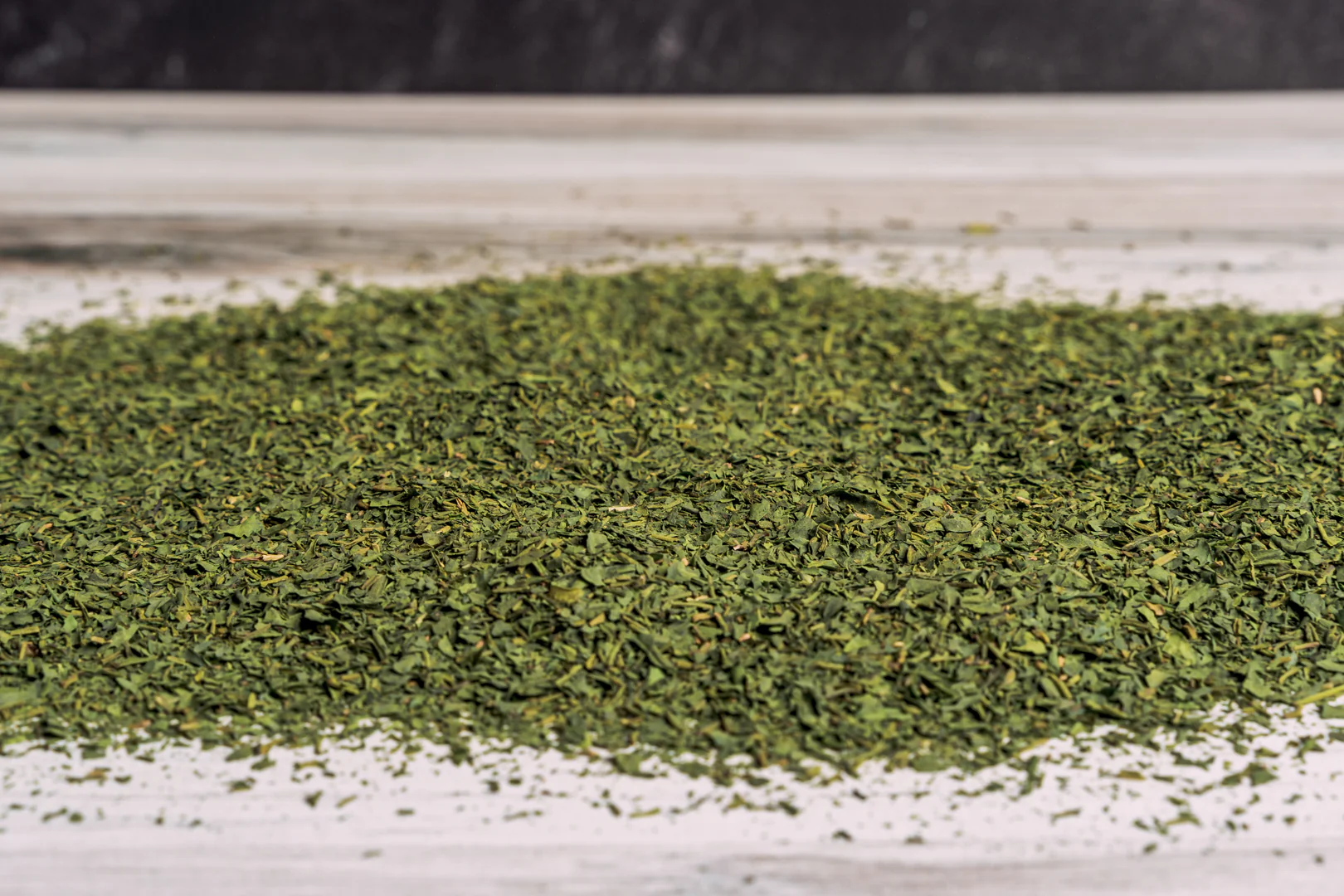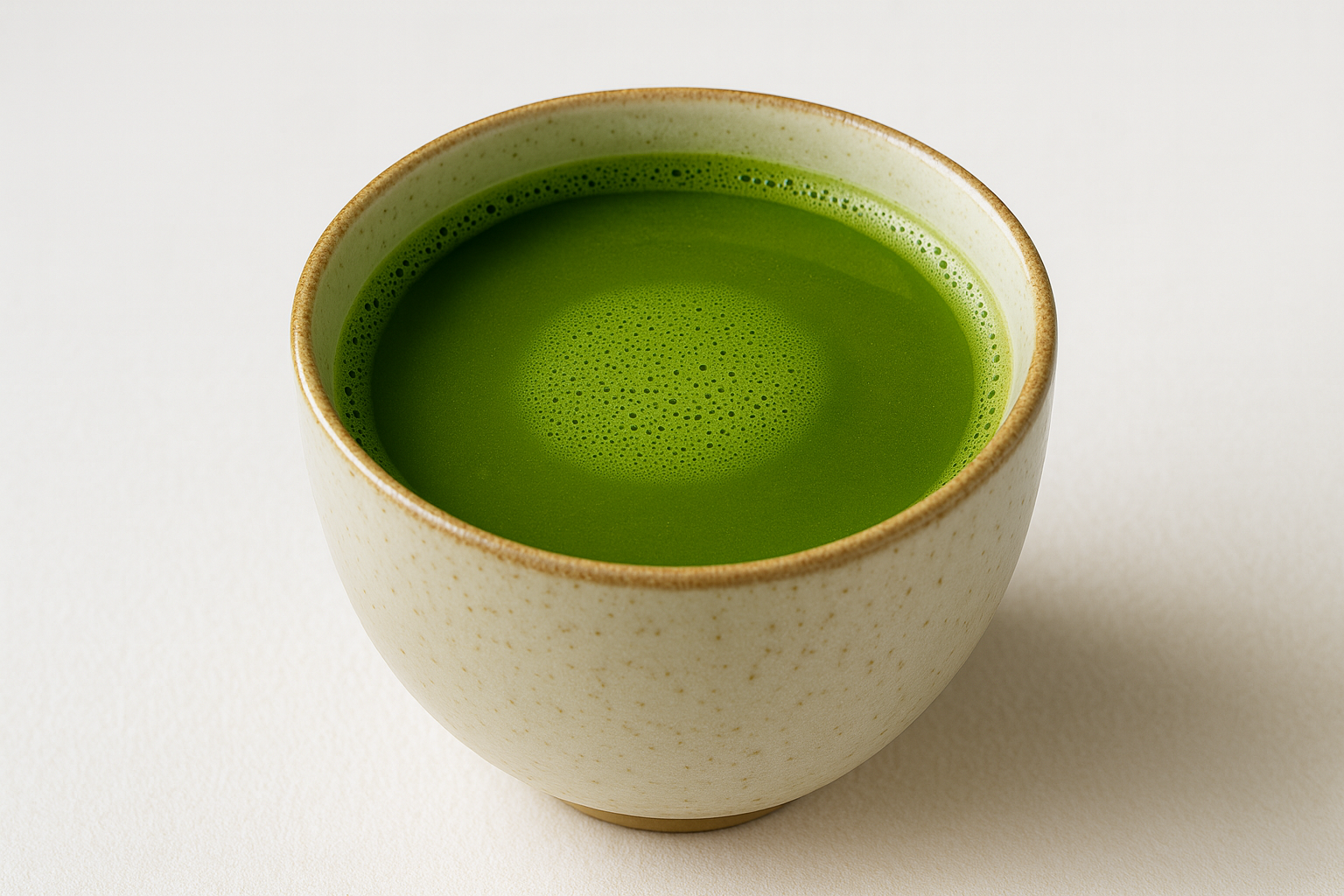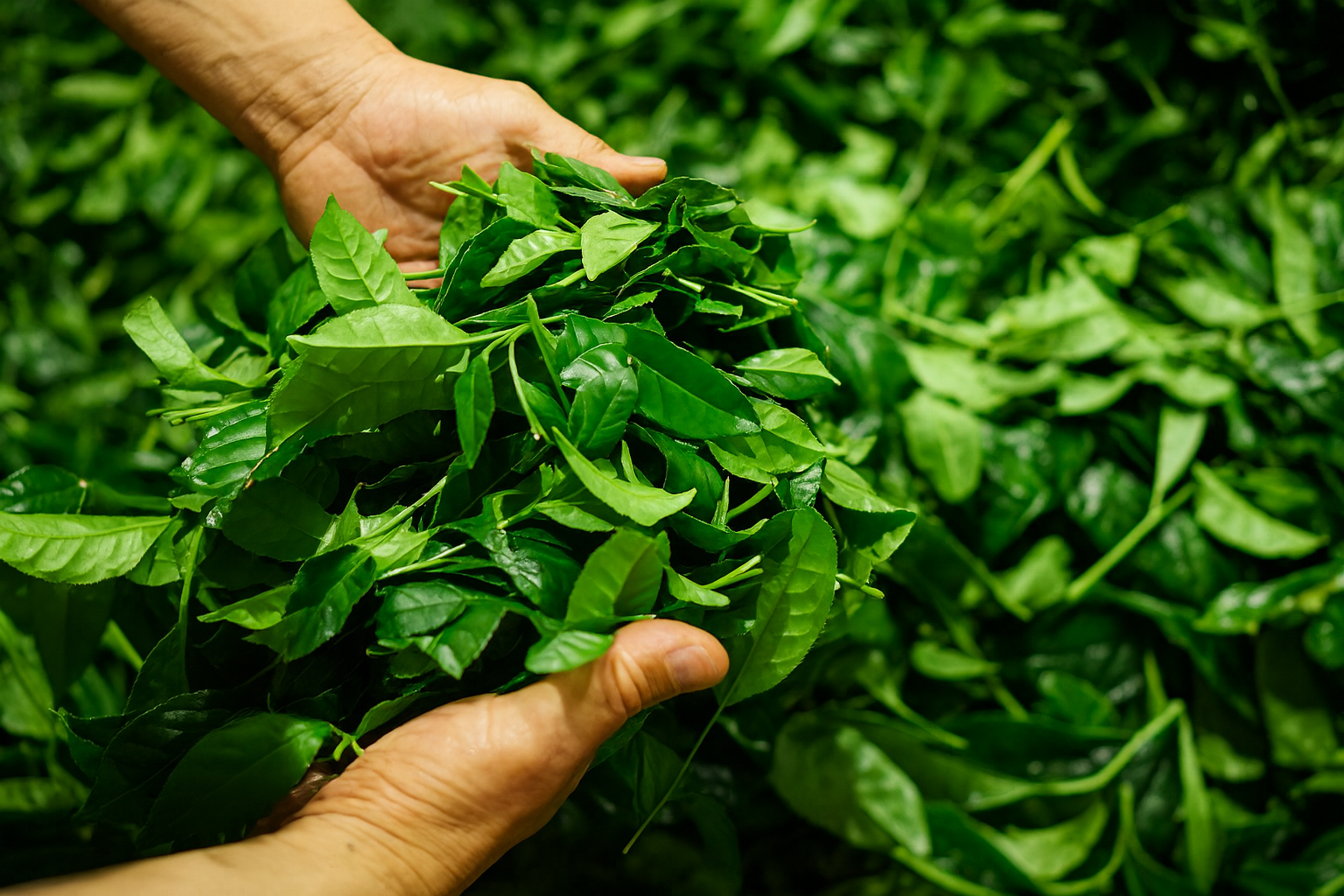Matcha
Shade-grown Japanese green tea, stone-milled into a vivid, umami-rich powder.
- Category: Powdered green tea (tencha leaves that are stone-milled)
- Origin: Japan — most famously from Uji (Kyoto), Nishio (Aichi), Yame (Fukuoka), and Kagoshima.
- Harvest: First flush (Ichibancha) in late April–May. Leaves are shaded for about 20–30 days before picking to enhance sweetness and umami.
- Grade: Ceremonial Grade, Premium/Usucha Grade, Culinary Grade



Tasting Profile
Brewing Guide
- Tea-to-water ratioUsucha: 2 g (~½ teaspoon) matcha per ~60 ml hot water; Koicha: 3–4 g matcha per ~30–40 ml hot water.
- Water temperatureUsucha: ~80 °C (176 °F); Koicha: ~70–75 °C (158–167 °F)
- Steeping timeUsucha: Whisk vigorously 15–30s; Koicha: Slowly knead into a glossy,
- InfusionsMatcha is prepared once; no reinfusions. The powdered leaf is consumed whole, delivering its full flavor and nutrients in a single preparation.
Background & Story
Matcha is unlike any other tea because the whole leaf is consumed in powdered form rather than steeped and discarded. Made from shade-grown tencha leaves that are stone-milled into a vivid green powder, matcha delivers concentrated flavor, aroma, and nutrients in every bowl. Its preparation — whisking powder with hot water until smooth and frothy — has become both a cultural ritual and a daily habit worldwide.
The roots of matcha stretch back to China’s Tang and Song dynasties, when powdered tea was common. Zen Buddhist monks later introduced the practice to Japan in the 12th century, where it became an essential part of meditation. By the 16th century, tea master Sen no Rikyū shaped the Japanese tea ceremony (chanoyu) into a mindful practice centered on harmony, respect, and simplicity, with matcha at its heart.
Production is a careful process. About three weeks before harvest, tea bushes are shaded to reduce light exposure. This increases chlorophyll and amino acids, particularly L-theanine, which give matcha its deep umami and natural sweetness. After harvest, leaves are steamed, dried without rolling, and stripped of stems to create tencha. Grinding tencha into matcha is slow and deliberate, taking about an hour for just 30 grams, ensuring a fine texture and vivid color.
Different regions add distinct character. Uji in Kyoto is famed for premium ceremonial matcha, Nishio in Aichi is known for large-scale cultivation, while Yame and Kagoshima bring rich, aromatic, and fresh-tasting varieties.
Today, matcha bridges tradition and modern life. It remains central to tea ceremonies but is equally at home in cafés and kitchens — whisked into lattes, blended into smoothies, or baked into sweets. Whether enjoyed for ritual, flavor, or health, matcha embodies centuries of culture and a timeless balance of energy and calm.
Benefits
- Rich in antioxidants that help protect against oxidative stress
- Promotes calm focus through the synergy of caffeine and L-theanine
- Supports heart and metabolic health with catechins and polyphenols
- Enhances memory and attention in small clinical studies
- Provides concentrated nutrients since the whole leaf is consumed
Serving Suggestions
Pairings
- Wagashi (traditional Japanese sweets)
- Dark chocolate or chocolate cake
- Strawberries or citrus desserts
- Castella or sponge cake
- Sweet red-bean treats (dorayaki, daifuku)
Teaware
- Chawan (tea bowl)
- Chasen (bamboo whisk)
- Chashaku (bamboo scoop)
Nutrition Facts
Serving Size: 1 cup prepared Matcha (240 ml, 2 g powder)
| Nutrient | Amount per Serving | % Daily Value* |
|---|---|---|
| Calories | 5–10 | <1% |
| Total Fat | 0 g | 0% |
| Sodium | 0 mg | 0% |
| Total Carbohydrates | 1 g | <1% |
| Protein | 0 g | 0% |
| Vitamin C | 2–4 mg | 3–5% |
| Vitamin A (beta-carotene) | Trace | <1% |
| Calcium | 4–6 mg | <1% |
| Potassium | 25–35 mg | <2% |
| Magnesium | 2–4 mg | 1% |
| Caffeine | 60–70 mg | — |
| L-theanine | 20–25 mg | — |
| Catechins (EGCG) | 60–80 mg | — |
| Polyphenols | 100–120 mg | — |
| Chlorophyll | High levels | — |
**Percent Daily Values are based on a 2,000 calorie diet.
† Functional compounds listed without %DV are present in significant amounts and contribute to Matcha’s health effects.



